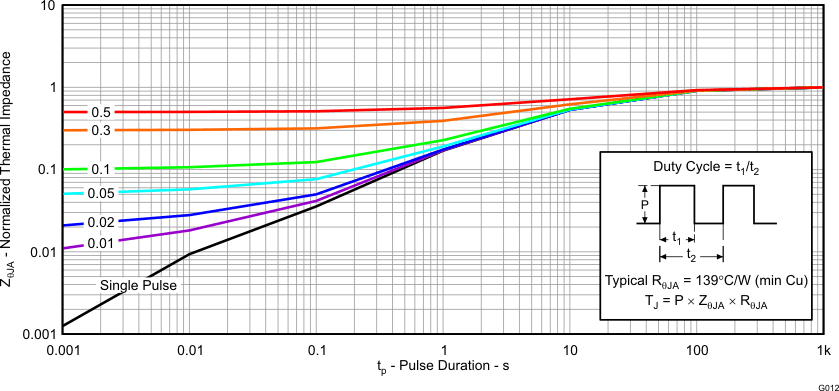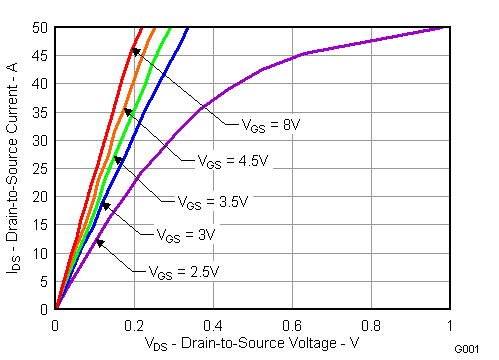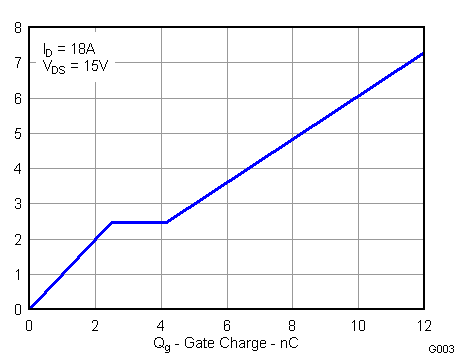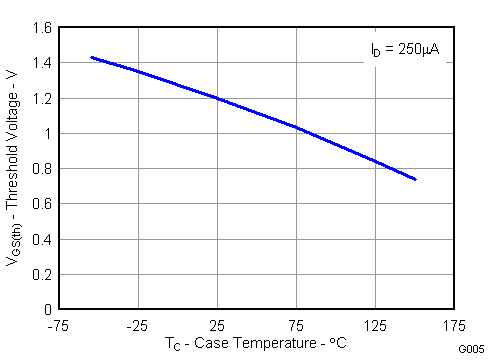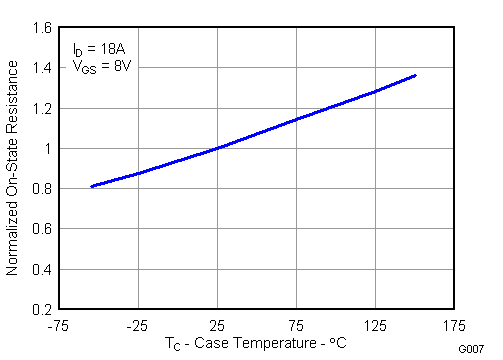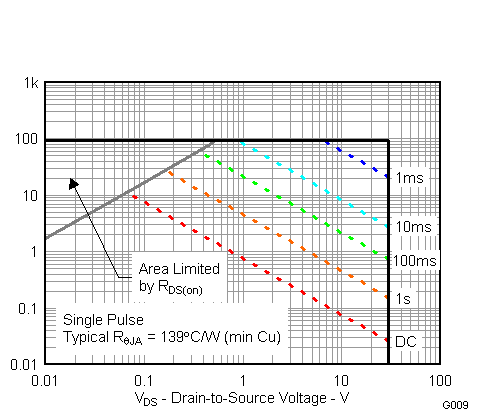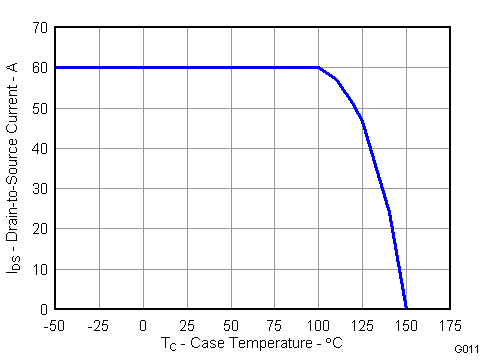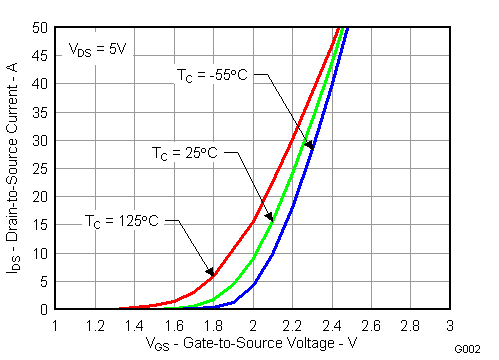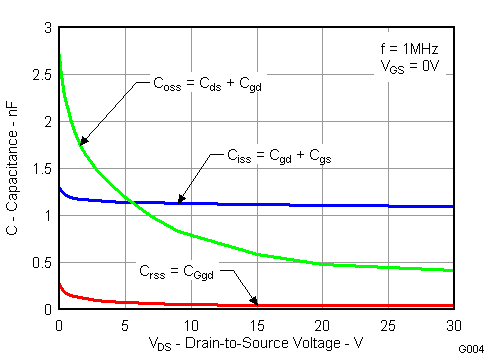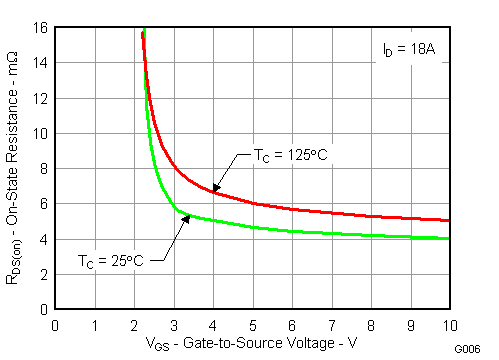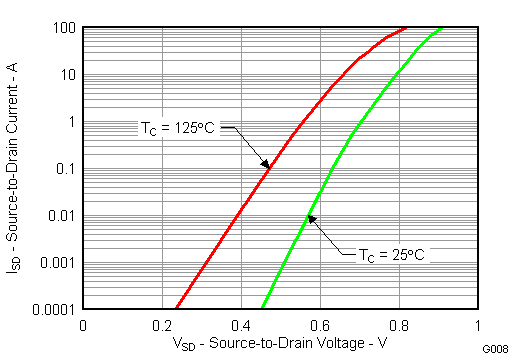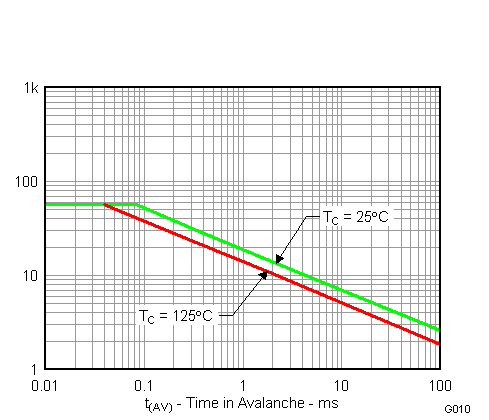SLPS261B March 2010 – September 2014 CSD17309Q3
PRODUCTION DATA.
- 1Features
- 2Applications
- 3Description
- 4Revision History
- 5Specifications
- 6Device and Documentation Support
- 7Mechanical, Packaging, and Orderable Information
Package Options
Refer to the PDF data sheet for device specific package drawings
Mechanical Data (Package|Pins)
- DQG|8
Thermal pad, mechanical data (Package|Pins)
Orderable Information
5 Specifications
5.1 Electrical Characteristics
(TA = 25°C unless otherwise stated)| PARAMETER | TEST CONDITIONS | MIN | TYP | MAX | UNIT | ||
|---|---|---|---|---|---|---|---|
| STATIC CHARACTERISTICS | |||||||
| BVDSS | Drain-to-Source Voltage | VGS = 0 V, ID = 250 μA | 30 | V | |||
| IDSS | Drain-to-Source Leakage Current | VGS = 0 V, VDS = 24 V | 1 | μA | |||
| IGSS | Gate-to-Source Leakage Current | VDS = 0 V, VGS = +10 / –8 V | 100 | nA | |||
| VGS(th) | Gate-to-Source Threshold Voltage | VDS = VGS, ID = 250 μA | 0.9 | 1.2 | 1.7 | V | |
| RDS(on) | Drain-to-Source On-Resistance | VGS = 3 V, ID = 18 A | 6.3 | 8.5 | mΩ | ||
| VGS = 4.5 V, ID = 18 A | 4.9 | 6.3 | mΩ | ||||
| VGS = 8 V, ID = 18 A | 4.2 | 5.4 | mΩ | ||||
| gƒs | Transconductance | VDS = 15 V, ID = 18 A | 67 | S | |||
| DYNAMIC CHARACTERISTICS | |||||||
| CISS | Input Capacitance | VGS = 0 V, VDS = 15 V, ƒ = 1 MHz |
1150 | 1440 | pF | ||
| COSS | Output Capacitance | 580 | 750 | pF | |||
| CRSS | Reverse Transfer Capacitance | 43 | 56 | pF | |||
| Rg | Series Gate Resistance | 1.2 | 2.4 | Ω | |||
| Qg | Gate Charge Total (4.5 V) | VDS = 15 V, ID = 18 A | 7.5 | 10 | nC | ||
| Qgd | Gate Charge Gate-to-Drain | 1.7 | nC | ||||
| Qgs | Gate Charge Gate-to-Source | 2.5 | nC | ||||
| Qg(th) | Gate Charge at Vth | 1.3 | nC | ||||
| QOSS | Output Charge | VDS = 13 V, VGS = 0 V | 15 | nC | |||
| td(on) | Turn On Delay Time | VDS = 15 V, VGS = 4.5 V, ID = 18 A , RG = 2 Ω |
6.1 | ns | |||
| tr | Rise Time | 9.9 | ns | ||||
| td(off) | Turn Off Delay Time | 13.2 | ns | ||||
| tƒ | Fall Time | 3.6 | ns | ||||
| DIODE CHARACTERISTICS | |||||||
| VSD | Diode Forward Voltage | IDS = 18 A, VGS = 0 V | 0.85 | 1 | V | ||
| Qrr | Reverse Recovery Charge | VDD = 13 V, IF = 18 A, di/dt = 300 A/μs |
30 | nC | |||
| trr | Reverse Recovery Time | 23 | ns | ||||
5.2 Thermal Information
(TA = 25°C unless otherwise stated)| THERMAL METRIC | MIN | TYP | MAX | UNIT | |
|---|---|---|---|---|---|
| RθJC | Junction-to-Case Thermal Resistance(1) | 2.0 | °C/W | ||
| RθJA | Junction-to-Ambient Thermal Resistance(1)(2) | 57 | |||
(1) RθJC is determined with the device mounted on a 1 inch2 (6.45 cm2), Cu pad on a 1.5 inches × 1.5 inches thick FR4 PCB. RθJC is specified by design, whereas RθJA is determined by the user’s board design.
(2) Device mounted on FR4 material with 1 inch2 2-oz.Cu.
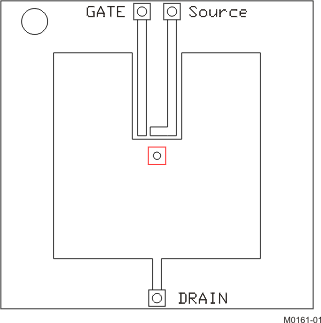 |
Max RθJA = 57°C/W when mounted on 1 inch2 (6.45 cm2) of 2 oz. (0.071 mm thick) Cu. |
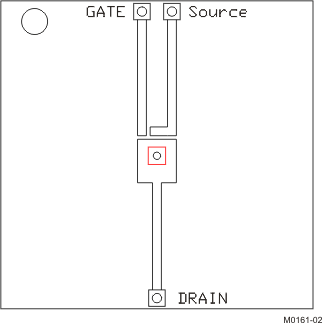 |
Max RθJA = 174°C/W when mounted on a minimum pad area of 2 oz. (0.071 mm thick) Cu. |
5.3 Typical MOSFET Characteristics
(TA = 25°C unless otherwise stated)